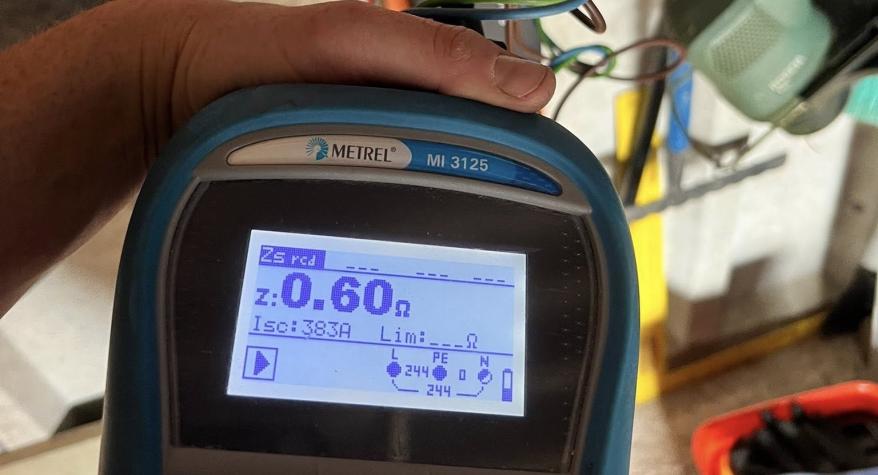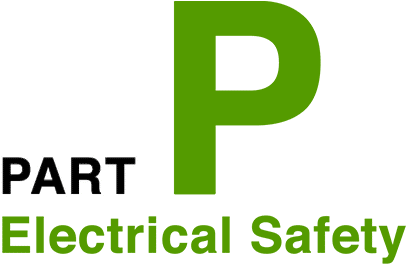A Complete Guide for Homeowners and Landlords by Your Local Electricians at Duravault
What Type of Things Are Found on an EICR in Leeds
As homes and rental properties in Leeds age, one of the most important steps property owners can take to ensure safety and legal compliance is arranging a regular Electrical Installation Condition Report (EICR). Whether you’re in a Victorian terrace in Headingley or a modern flat in Middleton, hidden electrical faults could pose a risk to life, property, and your investment. But what exactly gets uncovered during an EICR? What do the codes mean? And who’s qualified to carry one out?
In this detailed guide from Duravault, your trusted local electricians in Leeds, we’ll explain what an EICR involves, the types of issues we commonly discover, and what actions you might need to take next. If you’re a homeowner, landlord, or letting agent, this is essential reading.
What Is an EICR?
An Electrical Installation Condition Report (EICR) is a formal inspection carried out by a qualified electrician to assess the condition of a property's electrical systems. The report identifies any damage, deterioration, defects or non-compliance with current regulations that may present a risk.
Think of it as an MOT for your property's wiring.
An EICR checks everything from sockets and light fittings to fuseboxes, earthing arrangements, and circuit functionality. The goal is to ensure your installation is safe to use and fit for modern living standards.
At Duravault, we regularly carry out EICRs across Leeds postcodes, including LS1 to LS29, helping our clients in areas like Chapel Allerton, Morley, Cross Gates, and Pudsey stay compliant and safe.
Why Might You Need an EICR?
- Legal Requirement – Landlords must have a valid EICR carried out at least every 5 years.
- Buying or Selling a Home – A recent EICR reassures buyers and mortgage providers.
- After Renovations – Major electrical work or home improvements often trigger the need for a new inspection.
- Peace of Mind – Especially in older homes, an EICR identifies unseen risks before they become emergencies.
A properly completed EICR doesn’t just highlight faults—it gives you a clear plan for improving safety, preventing fire hazards, and ensuring compliance with BS7671 wiring regulations.
What Are the Different EICR Codes and What Do They Mean?
Once an EICR is complete, your electrician will issue a written report with codes that categorise the findings. These codes determine whether the installation is safe, and whether any remedial work is required.
Here are the four main codes used on EICRs:
- C1 – Danger Present
Immediate risk of injury. Requires urgent action. An example might be live parts exposed or burnt out cabling. The electrician is likely to make the situation safe on the spot. - C2 – Potentially Dangerous
No immediate threat but could become dangerous if left unaddressed. This often includes poor bonding or outdated components like wooden-backed fuseboxes. - C3 – Improvement Recommended
Not an immediate danger and doesn’t fail the inspection, but improvements would enhance safety. Think of things like missing labels or lack of surge protection. - FI – Further Investigation Required
Something appears off, but more testing is needed to confirm whether it's a risk. This might be caused by wiring irregularities or signs of prior DIY work.
Only reports that come back without any C1 or C2 codes (or unresolved FIs) can be considered "satisfactory". Anything else requires repairs or upgrades to bring the installation up to standard.
When we issue EICRs through Duravault, we provide you with:
- A fully itemised digital report
- Photos of major issues
- Clear recommendations and no-pressure quotes to resolve any concerns
Types of Faults Found on an EICR
Leeds properties—especially older ones—can present a wide range of faults during EICRs. While every property is different, there are some recurring issues we see time and time again in areas like Harehills, Meanwood, Garforth and Armley.
Here are some of the most common types of faults our electricians uncover:
- Outdated Consumer Units
Old-style fuseboxes with rewirable fuses are no longer compliant with modern safety standards. They often lack RCDs, which are essential for preventing electric shocks. - Poor or No Earthing
Earthing ensures that in the event of a fault, electrical current has a safe path to ground. Inadequate earthing is especially common in homes that haven’t been upgraded in decades. - Overloaded Circuits
We frequently see sockets with multiple extension leads or kitchens where too many high-powered appliances are on one circuit. This creates overheating risks and should be corrected. - Damaged or Deteriorating Wiring
Wiring can degrade over time, particularly if exposed to damp conditions or rodents. Cracked or perished insulation is a serious fire risk. - Improper DIY Work
DIY electrical work is surprisingly common and often causes more harm than good. This includes mismatched cables, unsafe connections, and circuits with no protective devices. - Loose Connections
Over time, terminals in light switches and sockets can loosen, leading to arcing, overheating, and fire risk. EICRs reveal these before they escalate into serious issues. - Incorrect Cable Usage
Using cables not rated for the load they carry or mixing old and new cabling types without proper termination can fail an EICR. - Missing Safety Labels or Warning Notices
While this might seem minor, missing information can delay future repairs and is a mark of poor compliance with regulations.
We always explain these findings in plain English so you’re never left scratching your head. Duravault’s EICR reports are homeowner-friendly, easy to understand, and delivered promptly.
Who Can Do an EICR?
Not every electrician is qualified to carry out an EICR—and even fewer do it to the level of detail and professionalism you deserve.
EICRs must be performed by an electrician who is:
- Qualified and competent under the latest IET Wiring Regulations (BS7671)
- Registered with a professional body such as NICEIC or NAPIT
- Fully insured and experienced in inspection and testing
At Duravault, we are NICEIC-approved contractors, which means our work is independently assessed for quality and safety. Every EICR we carry out in Leeds is conducted by a fully certified inspection specialist—not an apprentice or general tradesperson. Because we also carry out remedial works, we can often book repair appointments straight after the report is completed—saving you the hassle of going elsewhere.
Local Electrician for EICRs in Leeds
From terraced houses in Kippax to new-builds in Colton and larger HMOs in Kirkstall, Duravault is proud to be the go-to local electrician in Leeds for professional EICRs. We’ve built a reputation for reliability, honesty, and a no-hassle approach to compliance and safety.
Why Choose Duravault?
- We’re Local: Based in Leeds and covering all LS postcodes, we’re never far away.
- We Specialise in Compliance: Whether you’re a private landlord or housing association, we understand your legal duties inside and out.
- Fast Turnaround: Reports are usually issued within 24–48 hours.
- Fixed Prices: No surprise costs. You’ll know what to expect before we start.
- Clear Reporting: We keep the technical jargon to a minimum so you can make informed decisions.
For landlords, we also offer multi-property inspections with flexible scheduling and full documentation for your letting agents or local authority requirements.
Book Your EICR in Leeds Today
Whether you’re concerned about the age of your wiring, preparing for a sale, or simply want peace of mind, an EICR from Duravault gives you the full picture.
Our team serves:
- Central Leeds (LS1–LS4)
- North Leeds including Chapel Allerton, Alwoodley, and Moortown
- East Leeds including Temple newsam, Cross Gates, and Colton
- South Leeds including Middleton, Rothwell, and Woodlesford
- West Leeds including Armley, Wortley, and Bramley
📞 Call us now on 0113 436 9988
🌐 Or book online at www.duravault.co.uk
Your property’s safety matters. Let Duravault give you the confidence to know it’s in safe hands.



